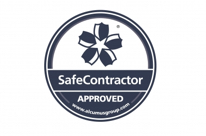On the 2 January 2007 the Waste Electrical and Electronic Equipment (WEEE) regulations came into force. WEEE is a new piece of producer responsibility legislation. It aims to reduce the amount of electrical and electronic equipment (EEE) ending up in landfill. Instead the regulations require the collection, treatment, recycling and environmentally sound disposal of WEEE. The regulations affect all brand owners, importers and distributors or retailers of EEE.
What does WEEE recycling mean?
WEEE stands for Waste Electrical and Electronic Equipment, so any electrical goods, equipment and components that are being thrown away or disposed of. WEEE recycling, is the process of recycling and reusing the waste electrical and electronic equipment, so as not to waste valuable materials that are used to make it.
Electrical goods, equipment and components that are being thrown away/disposed of. So WEEE recycling is reusing and recycling of waste electrical and electronic equipment.
Why is WEEE recycling important?
Recycling and reusing WEEE has many aspects that make it important. Any waste want should be disposed of properly, this stops it ending up in landfill, which, when it comes to electrical waste, can cause big problems. One of the issues with putting electrical goods and equipment in landfill is that some electrical goods and components release emissions that can damage the environment. As well as this, there are precious materials and vital components that can be reused, that are otherwise costly to get.
What is classed as WEEE waste?
When talking about WEEE waste, it’s important to understand what this refers to. It is anything that needs an electrical current to operate, whether that be power from the mains, a battery or solar energy. There are 10 different categories of electrical equipment, based on the industrial sectors they are used in or the components they use, we’ve listed these below with some examples;
- Large household appliances – Refrigerators, freezers, washing machines, air conditioner appliances, dishwashers, cookers, electric radiators etc.
- Small household appliances – Vacuum cleaners, carpet sweepers, care equipment, cleaning equipment, sewing equipment, toasters, fryers, scales etc.
- IT and telecommunications equipment – Computers, tablets, phones, printers, servers, monitors, calculators, telephones, phone answering systems etc.
- Consumer equipment – televisions, radios, video cameras, video recorders, musical instruments, audio amplifiers, photovoltaic panels etc.
- Lighting equipment – Fluorescent lamps, sodium lamps, other lighting equipment, other lighting equipment with the exception of filament bulbs etc.
- Electrical tools – Drills, saws, mowing and gardening equipment, tools for welding, soldering, riveting nailing or screwing etc.
- Toys, leisure and sports equipment – Video games consoles, sports equipment, coins slot and casino machines, electronic train or car racing sets etc.
- Medical devices – Radiotherapy, cardiology and dialysis equipment, freezers, fertilisation tests, pulmonary ventilators etc.
- Monitoring and control equipment – Smoke detector, thermostat, heating regulators, etc.
- Automatic dispensers – for hot drinks, hot or cold bottles or cans, solid products, money, appliances which deliver products automatically etc.
Full list can be found here, with the legislation.
How does WEEE recycling work
Based on the category the WEEE is designated in Annex V will determine how much needs to be recovered, reused and recycled. For example, when it comes to electrical tools, at least 75% shall be recovered and 55% shall be prepared for re-use and recycled.
The collecting and recycling of electrical goods is on the retailers and manufacturers, which means the onus is on them to supply places for people to drop off their unwanted electrical equipment.
As of 2019, the minimum collection amount required by retailers and manufacturers is 65% of the average weight of EEE placed on the market. Failure to do this will result in paying a fee, which is then used to improve recycling services.
This means that has become much easier for people to recycle their waste electrical goods.
At Cartwrights, we offer a simple and safe solution for collecting, recycling and treatment of your WEEE, making sure your legislative and duty of care requirements are met in a responsible and efficient manner.
The items are taken to an Approved Authorised Treatment Facility (AATF) for disposal. This will ensure that recycling and final disposal of your items will be done in accordance with the standards set in the WEEE Regulations. All items are recycled and reused wherever possible.





